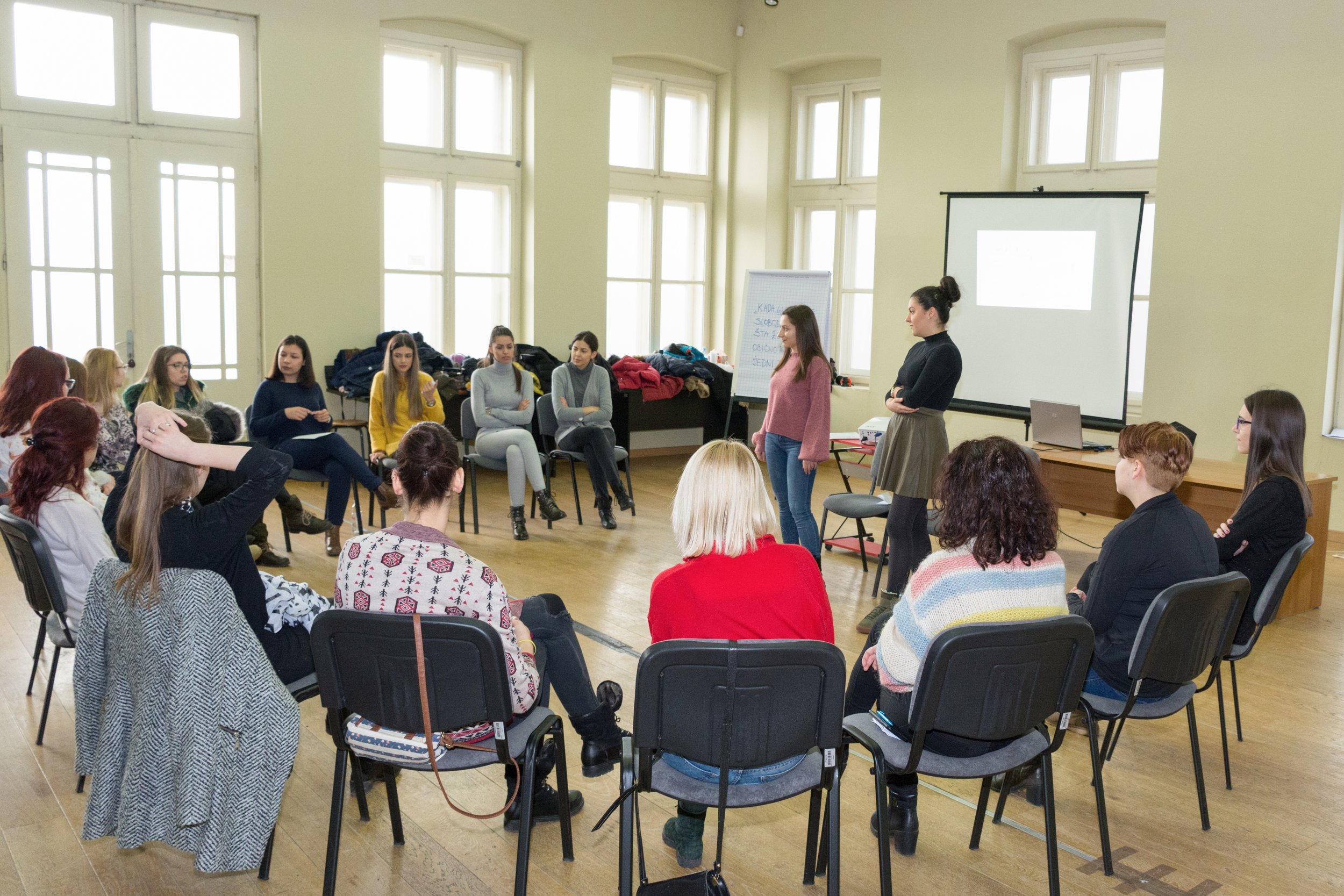
It’s Not Always About You: The benefits of building student autonomy and democracy in the large ensemble setting.
Schatt, M. D. (2022). Passing the Baton: Building Student Autonomy and Democracy in the Large Ensemble Setting. Update: Applications of Research in Music Education, 40(3), 49-59. https://doi.org/10.1177/8755123321104169
If we are effective on the podium with our methods for providing meaningful feedback, student learning should be taking place. What better way to see what students know than to allow THEM to take control of the rehearsal process from time to time? Besides an increase in self-efficacy and individual buy-in for the process through the provision of autonomy, we might even learn a about conductor-teacher selves as well.
-
Introduction
This all sounds great, but let’s be real - we have a concert to prepare for, we don’t have time for this. I hear you, but if we are truly all about student learning outcomes beyond a performative product, we must consider student self-efficacy which leads to intrinsic motivation for learning (and future participation in music). Schatt’s study illustrates for us how a cycle of 10 student-led rehearsals (with ground rules and structures in place) increased student self efficacy by giving them complete autonomy over the rehearsal process. Students became error-detectors themselves, and therefore more aware of listening to their peers. Everyone had equal rights to stop the ensemble and engage in peer critique. Some of you right now are thinking about this and nodding your heads in agreement, and some of you may just see “Lord of the Flies” happening.
-
So, What Happened, Lord of the Flies? Or, Orpheus Chamber Orchestra
As the architect for the study, the author set up the group for success. Students were given 10 rehearsals without the director in the room to prepare a piece for an upcoming concert. In this case, the piece was a grade level below the ensemble’s typical capability, in a familiar key throughout, and maintained steady tempo throughout. The careful selection of the literature essentially negated roadblocks such as dramatic tempo changes and challenging notes/rhythms/key signatures. Also, the piece had a variety of reference recordings available on YouTube. Copies of the score were available for all students.
Throughout the rehearsal process, students could stand up to stop the ensemble and make comments which typically included error-detection, balance, and interpretive choices.
At the conclusion of the rehearsal, students would engage in a 5-minute goal-setting discussion to help in planning the following rehearsal.
As you can imagine, this was difficult at first for students, but eventually they became more comfortable with the process. Pre/Post questionnaires revealed that students felt a higher sense of self-efficacy by way of comments such as their ability to assess and correct issues for themselves and their peers in the ensemble, and also the belief that while they identify their teacher as important, students are capable of rehearsing themselves at a high level.
-
So What?
As a teacher-conductor, no pill can be more difficult to swallow than the “they don’t need us as much as we think they do” pill. The author describes self-determination theory (SDT) as integral to establishing a healthy sense if intrinsic motivation. The author quotes Reeve et al., 2004, explaining that SDT “asserts that humans innately desire to satisfy their psychological needs for competence, relatedness, and autonomy” (p. 50).
So, besides walking away from the podium, and turning the entire rehearsal process over to the students, how else might we help to meet students’ needs for competence, relatedness, and autonomy?
Schatt suggests allowing students voice in selecting literature, rehearsing/performing without a conductor, use of non controlling language, giving more space for peer-critique in the rehearsal setting, and “regularly solicit[ing] student feedback on selecting the rehearsal techniques needed for personal and ensemble improvement” (p. 49).
-
Mike's Riff
I love shaking things up. I love this! While we may not be comfortable with this particular model in mind, I think we really need to keep in mind how we may better increase student autonomy and therefore, self-efficacy. The traditional master-apprntice/conductor-student power dynamic doesn’t allow for so much autonomy for students. And some may say “if it ain’t broke, don’t fix it.” But I say “it may not be broke, but we know better.”
I haven’t been so brave as to totally leave the room for student-led rehearsals. I have from time to time invited student conductors to rehearse the band and give feedback (and eventually conduct a piece at the concert). But I was always there in the room as a lifeline. I think that however we decide to introduce more student democracy in the ensemble setting, we must make sure it is a positive experience for the students. Setting them up for success is critical, balancing the purposeful safeguards and architecture of the rehearsal setting(s) with a great deal of student autonomy,
Finally, I think this calls for us as conductors to put more trust in our students’ abilities. Students know what we taught them. If we teach them well, they will have the tools to self-correct, and self-rehearse. I realize it is more complicated than that, but to me, watching my students rehearse one another and give critical feedback is a reflection of myself as a teacher. It’s scary, but pretty rewarding!